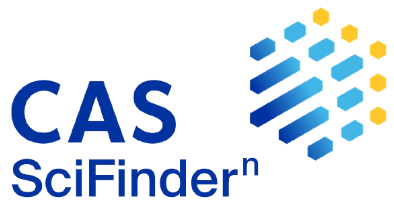Synthesis of 4,4,6-trimethyl-8-R-4H-pyrrolo [3,2,1-ij] quinoline-1,2-diones
DOI:
https://doi.org/10.24959/ophcj.14.798Keywords:
Stolle reaction, 2, 4-trimethyl-1, 2-dihydroquinoline, oxalylchloride, pyrrolo[3, 1-ij]quinoline-1, 2- dioneAbstract
The features of the Stolle reaction in a series of substituted 2,2,4-trimethyl-1,2-bis (tetra) hydroquinoline have been investigated. When carrying out the reaction of oxalyl chloride not with 2,2,4-trimethyl-1,2-dihydroquinoline and 2,2,4-trimethyl-1,2,3,4-tetrahydroquinoline themselves, but with their hydrochlorides we have succeeded in avoiding the side formation of oxalic diamides 2 and increased the yields of pyrrolo[3,2,1-ij]quinoline-1,2-dione 3a-g up to 90%. It has been determined that carrying out the reaction in methylene chloride requires boiling for 1.5-2 h, in carbon tetrachloride it is 40-50 min, and in toluene it is only 20-30 min. It has been found that in the abovementioned conditions methoxy and benzyloxy groups are not hydrolyzed and, thus, the previously unknown 4,4,6-trimethyl-8-R-4H-pyrrolo [3,2,1-ij]quinoline-1,2-diones containing alkoxy, acyloxy and hydroxy groups have been synthesized. When studying the Stolle reaction for bifunctional 6-hydroxy-2,2,4-trimethyl-1,2- dihydroquinoline it has been found that acylation with oxalyl chloride and the subsequent cyclization proceed selectively only by the secondary amine group of the hydroquinoline ring with saving the hydroxyl group. It has been shown that the use of a two-stage modification of the Stolle method for the synthesis of pyrrolo [3,2,1-ij] quinoline-1,2-diones brings no advantages compared to the classical method of direct interaction of the substrates with oxalyl chloride. The structure of the compounds obtained have been confirmed by IR and 1H NMR spectroscopy and elemental analysis.Downloads
References
- Zhungiyetu G.I., Rekhter M.A. Izatin i yego proizvodnyye (Isatin and its derivatives). Chisinau, Shtiintsa, 1977, 228 p.
- Petyunin P.A. Khimija geterotsiklicheskikh soyedinenij – Chem. Heterocycl. compd., 1966, No.5, pp.944-945.
- Silva J.F.M., Garden S.J., Pinto A.C. J. of the Brazilian Chemical Society, 2001, 12(3), pp.276. Cited 4 times. doi: 10.1590/S0103-50532001000300002
- Pat. 4198414 USA, 424/258. Compounds and methods for treating diabetic complications / H. R. Munson, 1977.
- Knoеvenagel E. Berichte der deutschen chemischen Gesellschaft (B Series), 1922, 55(8), pp.2309-2321. Cited 3 times. doi: 10.1002/cber.19220550811
- Zobian E.J., Kelloy W.S., Dunathan H.C. J. of Organic Chemistry, 1964, 29 (3), pp.584-588. Cited 7 times. doi: 10.1021/jo01026a016
- Lugovik B.A., Borodin P.V., Yudin L.G., Kost A.N. Khimija geterotsiklicheskikh soyedinenij – Chem. Heterocycl. compd., 1970, No.11, pp.1512-1514.
- Ivanov YU.A., Zaychenko N.A., Rykov S.V., Grinberg O.YA., Dubinskiy A.A., Pirogov S.D., Rozantsev E.G., Pokrovskaya I.S., Shapiro A.B. Izvestiya AN SSSR. Seriya khimicheskaya (Math. USSR Academy of Sciences. Ser. chem), 1979, No.8, pp.1800-1807.
Downloads
Published
How to Cite
Issue
Section
License
Copyright (c) 2014 National University of Pharmacy

This work is licensed under a Creative Commons Attribution 4.0 International License.
Authors publishing their works in the Journal of Organic and Pharmaceutical Chemistry agree with the following terms:
1. Authors retain copyright and grant the journal the right of the first publication of the work under Creative Commons Attribution License allowing everyone to distribute and re-use the published material if proper citation of the original publication is given.
2. Authors are able to enter into separate, additional contractual arrangements for the non-exclusive distribution of the journal’s published version of the work (e.g., post it to an institutional repository or publish it in a book) providing proper citation of the original publication.
3. Authors are permitted and encouraged to post their work online (e.g. in institutional repositories or on authors’ personal websites) prior to and during the submission process, as it can lead to productive exchanges, as well as earlier and greater citation of published work (see The Effect of Open Access).














